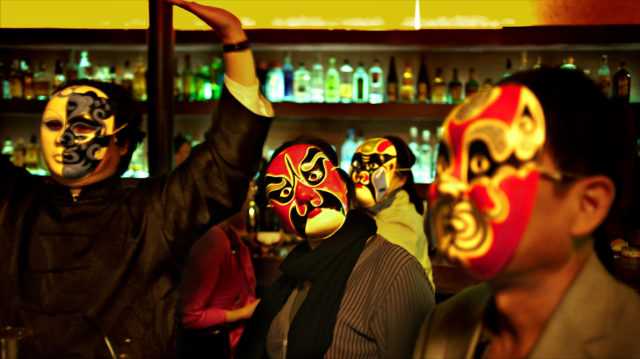
Chinese Halloween by Jonathan Kos-Read on flikr
Many people worldwide cherish fond memories of childhood Halloween, which is celebrated differently worldwide. In the U.S. on this day revelers have the opportunity to put on a costume and become a princess or an astronaut, and light candies that parents normally prohibit. What about other nations and their Halloween celebrations?
Samhain festival, the father of Halloween, is an ancient festival celebrated by Celtics who lived 2,000 years ago in what is known as Ireland and the United Kingdom or U.K. The Celtic Halloween traditions arrived in the U.S with the nearly 2 million Irish that migrated in the eighteenth century.
Many countries celebrate Halloween festivities, and have national traditions characterized by costumes, special cuisine, and that honor those who have passed. Learn about these Halloween-related traditions worldwide:
- Samhain: Ireland and Scotland – Believed to be the birthplace of Halloween, the Irish and Scottish still celebrate the end of the summer and cold winter start on November 1st. On the last day of October, they enjoy parties with games, bonfires, for and costumes for “trick-or-treating.” On the evening of the 31st it’s common to see children playing pranks on their neighbors.
- Dracula’s Day: Romania – In Romania, international travelers various locales arrive in Transylvania to celebrate Halloween on October 31st. Costumes are worn that range from Dracula to characters from all of the classical story scenes. However, the local Romanians celebrate ‘St. Andrews Night’, which occurs on November 30. On this day, Romanians use garlic to protect against ghosts, including Dracula.
- The Hungry Ghost Festival: China – In China and throughout Hong Kong, the seventh day of the seventh month in the lunar calendar is the start of the Hungry Ghost Festival.The celebration consists of many parades, performances to entertain the spirits, food offerings for the dead, singing and burning of incense. It is believed that the festival is necessary annually to feed the spirits food or else they wander restlessly.
- Dia De Los Muertos: Latin America – Many Latin Americans celebrate the ‘Day of The Dead’ on the first two days of November in honor of those who have passed into the afterlife. Legend has it that when the Gates of Heaven open at midnight on October 31, the spirits of the deceased return to earth to reunite with their families for the day. Families create altars with pictures of those who have passed, as well as food offerings, children’s toys, and cigarettes or mezcal shots for the adults.
Having knowledge about how our global counterparts celebrate Halloween helps us build cultural bridges, and understand our own culture’s Halloween celebrations.
Sharon Schweitzer and Sophie Echeverry co-wrote this post. Sharon Schweitzer, J.D., is a cross-cultural trainer, modern manners expert, and the founder of Access to Culture. In addition to her accreditation in intercultural management from the HOFSTEDE Centre and the Intercultural Communication Institute, she serves as a Chinese Ceremonial Dining Etiquette Specialist in the documentary series Confucius was a Foodie, on Nat Geo People. She is the resident etiquette expert on two popular lifestyle shows: ABC Tampa Bay’s Morning Blend and CBS Austin’s We Are Austin. She is regularly quoted by BBC Capital, Investor’s Business Daily, and Fortune. Her Amazon #1 Best Selling book in International Business, Access to Asia: Your Multicultural Business Guide, now in its third printing, was named to Kirkus Reviews’ Best Books of 2015. She’s a winner of the British Airways International Trade Award at the 2016 Greater Austin Business Awards and the 2017 New York City Big Book Award for Multicultural Nonfiction.
Sophie Echeverry is the corporate marketing manager and event coordinator at Access to Culture. Born and raised in Colombia, she’s a 2018 graduate with a B.B.A. in International Business and Marketing from Hult International Business School in San Francisco, CA. Connect with her on LinkedIn.

Leave A Comment